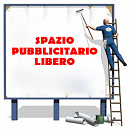Working on car assembly lines involves repetitive tasks, long hours, and physically demanding labor. As a result, the risk of ergonomic injuries is significant. Fortunately, these risks can be minimized by following proper ergonomic principles and training. If you’re working in the automotive manufacturing industry, an IOSH Course can be invaluable in providing the knowledge and skills necessary to understand and implement ergonomic best practices. In this article, we will explore 10 practical tips for reducing ergonomic risks, helping workers stay safe and productive on the job.
10 Tips
1. Implementing Ergonomic Training through an IOSH Course
One of the first steps in reducing ergonomic risks on the car assembly line is ensuring that workers are properly trained. Taking an IOSH Course is an effective way to learn about workplace ergonomics, the causes of musculoskeletal disorders, and strategies to minimize risks. The IOSH Training Course covers a wide range of safety topics, including ergonomics, and teaches workers to recognize potential hazards in their work environment.
A well-structured IOSH Course can provide workers with essential tools and techniques for creating a safer, more ergonomic workspace. By training supervisors and workers alike, companies can foster a culture of safety, reducing injury rates and improving overall productivity.
2. Adjusting Workstation Heights to Improve Posture
One of the most common ergonomic issues in car assembly lines is poor posture, often caused by workstations that are not adjusted to the correct height. To avoid musculoskeletal disorders, it’s crucial to adjust workstations to ensure that employees maintain a neutral posture while working. This means that tasks should be performed with the arms slightly bent, and the worker’s feet should be flat on the ground.
If workstation heights are too high or low, workers may be forced to adopt awkward positions that strain their muscles and joints. Adjusting the height of workbenches, tools, and equipment can alleviate these issues and promote better posture. As part of an IOSH Training Course, workers can gain practical insights into making ergonomic adjustments in their workspace.
3. Use of Adjustable Chairs and Stools
In car assembly lines, workers often stand for long periods. However, standing continuously can lead to fatigue and discomfort. Providing adjustable chairs or stools allows workers to alternate between standing and sitting, which can reduce strain on the lower back and legs. When selecting seating options, make sure they are ergonomic and provide adequate support to promote good posture.
By incorporating adjustable seating into workstations, companies can help reduce the risk of chronic musculoskeletal injuries. This is another area where an IOSH Course can be beneficial, as it helps workers and managers understand the importance of proper seating and posture.
4. Introducing Tool and Equipment Modifications
Tools and equipment that require excessive bending or reaching can contribute to ergonomic problems. By redesigning tools to be more user-friendly, assembly line workers can perform tasks with less strain. This may include adding handles or grips to tools, using adjustable arms or levers, or investing in tools that reduce the need for excessive twisting or turning.
Tool modifications are an essential part of an effective ergonomic strategy in the automotive industry. A key lesson from an IOSH Training Course is the importance of evaluating and improving the design of tools and equipment to minimize strain on workers.
5. Job Rotation to Prevent Repetitive Strain
Repetitive tasks are a major contributor to ergonomic injuries in car assembly lines. To minimize the risk of repetitive strain injuries, job rotation can be an effective solution. By rotating workers between different tasks, you reduce the likelihood of them performing the same movements for extended periods, which can help to alleviate stress on muscles and joints.
Implementing job rotation programs, as outlined in the IOSH Course, ensures that workers are not overloading specific muscle groups and can also improve productivity and job satisfaction.
6. Providing Proper Footwear for Workers
Footwear is often overlooked when considering ergonomics in the workplace. However, uncomfortable or unsupportive shoes can cause pain and discomfort, especially when workers are required to stand for long periods. Providing workers with ergonomic footwear that offers proper arch support and cushioning can reduce strain on the feet, legs, and lower back.
A key point covered in the IOSH Training Course is the importance of supporting workers’ physical needs by providing suitable footwear. This simple step can have a significant impact on reducing ergonomic risks and improving comfort.
7. Implementing Regular Stretch Breaks
Encouraging regular stretch breaks is essential for reducing the risk of ergonomic injuries. When workers take breaks to stretch, it helps to alleviate muscle tension and promote blood circulation. Stretching also reduces the likelihood of stiffness and discomfort caused by prolonged periods of standing or repetitive movements.
Incorporating regular stretching exercises into daily routines can be part of the ergonomic training provided in an IOSH Course. These breaks can be built into work schedules, ensuring that workers stay limber and reduce their risk of strain.
8. Maintaining a Clean and Organized Workspace
A cluttered or disorganized workspace can lead to poor posture and repetitive strain injuries. When work areas are chaotic, workers may be forced to reach or bend in awkward positions to access tools or materials. Keeping the workspace clean and organized ensures that tools and equipment are within easy reach, minimizing the need for unnecessary bending, twisting, or stretching.
An important aspect of ergonomics covered in the IOSH Training Course is the importance of workplace organization. By maintaining a tidy environment, workers can perform tasks more efficiently and safely.
9. Ergonomically Designed Assembly Line Stations
The design of assembly line stations plays a crucial role in worker comfort and safety. Assembly lines should be designed so that tasks can be completed without excessive bending, twisting, or reaching. Ergonomically designed workstations can include adjustable heights, overhead storage, and optimal placement of tools and parts.
By focusing on ergonomic workstation design, companies can reduce the likelihood of strain injuries and increase worker efficiency. This is an essential element of the information provided in an IOSH Course, which teaches practical approaches to improving workstation layouts.
10. Encouraging Employee Feedback and Involvement
The best way to identify potential ergonomic risks on the car assembly line is to involve the workers themselves. Workers who are on the frontlines of production are best equipped to identify areas where ergonomic improvements can be made. Encouraging employees to report discomfort or suggest improvements helps to foster a culture of safety and ensure that ergonomic risks are addressed proactively.
By incorporating feedback from workers into the safety culture, companies can create an environment where everyone is responsible for maintaining ergonomically sound practices. This collaborative approach is one of the key aspects of an IOSH Training Course, which emphasizes the importance of engaging all levels of staff in safety initiatives.
Conclusion
Minimizing ergonomic risks on car assembly lines is essential for promoting worker health, reducing injuries, and improving productivity. By following the tips outlined in this article, companies can significantly reduce the risk of musculoskeletal disorders and other ergonomic issues. Enrolling in an IOSH Course can provide valuable insights and training on how to implement these strategies effectively. With the right tools, training, and commitment to safety, workers can thrive in an ergonomically sound environment.










